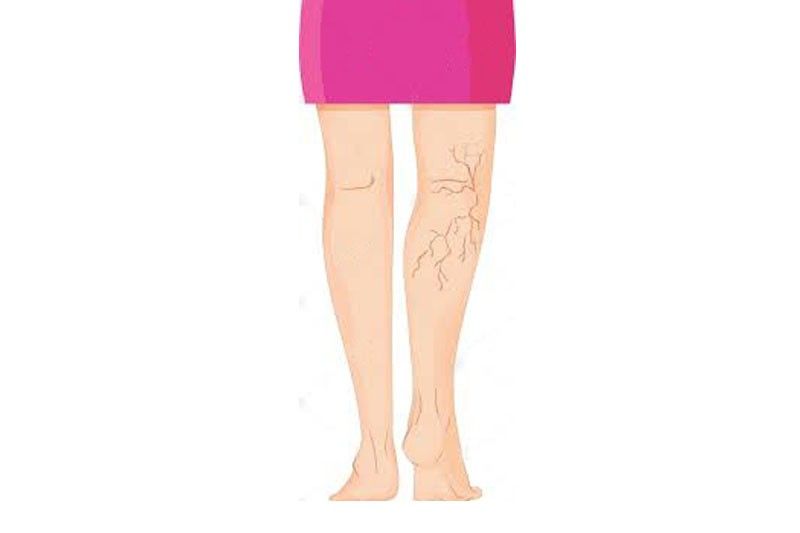Varicose veins can be fatal


A 66-year-old woman was found dead in her home lying in a pool of blood by her neighbor. Crumpled, blood-soaked tissues were found beside her body, and smears and smaller blood pools were found all around the house.
The woman was living alone, her medical history unknown. During the autopsy, the skin of her left lower leg showed significant edema, brownish-red discoloration and induration, compatible with chronic venous insufficiency (CVI). This occurs when your leg veins don’t allow blood to flow back up to your heart.
On her left lower leg, a 7-mm cutaneous ulceration was noted. These were intense signs of longstanding venous insufficiency and statis dermatitis (skin changes seen in those with varicosities).
Upon dissection, the surrounding skin was remarkably firm, the ulcer margin was reddish and folded, whereas the base of the ulcer was red with evidence of continuation with a superficial vein. No obvious traumatic lesions were observed like abrasions, bumps etc.
CVI develops when venous pressure is increased and the return of blood is impaired through several mechanisms.
The first is from valvular incompetence or malfunction (these valves open and close to control the flow of blood in the veins), preventing venous insufficiency and varicose vein formation.
The second is from venous obstruction, or a combination of both. These factors are exacerbated by muscle pump dysfunction (when the calf muscle at the back of the legs cannot contract fully and thus, it cannot pump blood back to the heart).
These two mechanisms serve to produce venous hypertension, which occurs when there’s increased pressure inside your veins because of the pooling of blood, which is secondary to a valve defect; calf muscle pump malfunction, particularly with standing or ambulation.
When left untreated, this leads to the bursting of the vein. Contributing to the macro-circulatory hemodynamic disturbances are alterations within the microcirculation. Unabated venous hypertension may result in dermal changes with hyperpigmentation, subcutaneous tissue fibrosis called “lipodermatosclerosis” (the narrowing of the distal third of the leg, secondary to skin tightening as a result of scarring underneath the skin) with eventual ulceration, and large varicose vein formation.
The characteristic features of deaths due to massive bleeding from a ruptured varicose vein, which is secondary to chronic venous insufficiency, have been reported, as in this particular case. They include old age, social isolation, possible underlying medical conditions (e.g. restricted mobility, dementia), hemorrhage related to minor trauma, some associated features such as alcohol consumption or anticoagulant medications.
Another important risk factor is the hardening of the vessel walls that may lead to spontaneous hemorrhage. Coexisting disease as a predisposing factor to death has been reported, such as ischemic heart disease.
Interestingly in this case, the presence of liver cirrhosis (based on the autopsy) seemed to have contributed to the fatal outcome. The chronic disturbance in the capacity of the liver to produce blood proteins that stop the bleeding prevented the formation of a blood clot to suppress the massive loss of blood, predisposing the woman to significant hemorrhage and accelerating death.
In the cases of death due to varicosity rupture, it is worth mentioning that the victims’ failure to give themselves the adequate immediate medical care — e.g. direct pressure application and elevation of the bleeding limb — may have contributed to their death.
The victim in this case tried to give herself first aid, as bloodstained tissues were found around her. Her liver pathology (cirrhosis) results showed exaggerated hemorrhage, something that quickly resulted in unconsciousness and hastened death.
A total number of 66 cases have been described in reports since the phenomenon was discovered for the first time in 1973. The youngest person dying of fatal varicosity rupture has been reported to be a 29-year-old man, who was found dead in his store lying in blood.
Varicose veins are a chronic clinical condition. According to a review of patients in Western countries, varicose veins affect one quarter to one third of all adults. Although they are usually benign, severe varicosities may lead to major complications including edema, dermatitis, lipodermatosclerosis, ulceration and severe bleeding.
Ulceration is due to diminished protective sensation in the lower extremities. Increased injury related in these areas (even minimal) could also lead to more ulceration compounded with slower healing and frequent recurrence of these ulcers, especially in the bony prominences.
Bleeding, on the other hand, can be exacerbated when other factors such as anticoagulant medications, alcohol, and sedatives are taken by individuals with varicose veins.
Cases where a significant hemorrhage takes place may simulate arterial bleeding and represent medical emergencies and lead to death if not treated immediately. Although varicose veins are a benign clinical pathology, they conceal the danger of a rupture, especially if left untreated. The subsequent venous bleeding can be severely intensive and can quickly lead to a loss of consciousness and death. Awareness of the risk of a massive hemorrhage may prompt the need for preventive treatment.
Dermatologists and therapists should bear in mind that whenever they treat a patient for varicose veins or any other pathology that might worsen varicosities, they should always consider the possibility of adverse interaction of the morbid entities leading to fatal bleeding of the varicose vein.
The good news is that there are ways to prevent it from developing and to prevent complications.
* * *
For inquiries, call 8401-8411, SMS 0917-571-1992, 0999-883-4802 or email at gc_beltran@yahoo.com. Follow me on facebook@dragracebeltran.



















